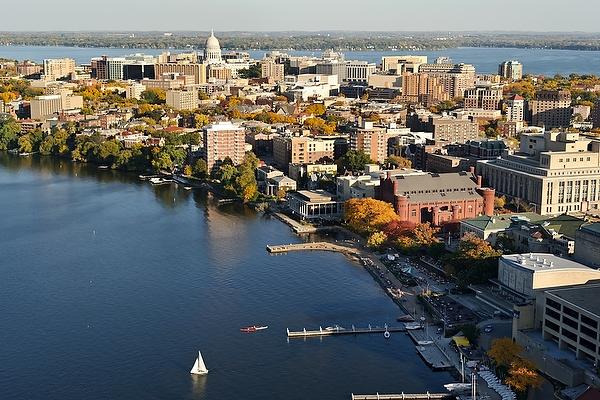A University of Wisconsin professor’s report released late December outlines factors which attract and keep young people in Wisconsin.
The Gaining and Maintaining Young People in Wisconsin Communities report shows there are rural areas of the state that are successful at attracting and keeping young people in their towns.
Sociology professor Randy Stoecker, who was the principal investigator of the study, said the majority of these communities have been successful in part due to their close proximity to large urban areas.
“These young adults want to go home to a kind of idyllic small town life and they want the bright lights of the city too — they just don’t want to live there,” Stoecker said. “They’re choosing smaller, rural places but by and large they’re choosing those places that are still within a decent driving distance from cities.”
The report looked at the following communities: Delavan, West Bend, Omro, De Pere, Black Creek, Plover, Hayward, Somerset, New Richmond, Onalaska, Brooklyn and Evansville.
The study’s findings also included good schools, outdoor recreation amenities, affordable housing and opportunities for civic engagement as attractive factors for young people.
Co-principal investigator Matt Calvert said the young people who live in these communities are not stuck or feel they have no other place to go.
“What we heard is that people aren’t stuck,” Calvert said. “They made an active choice to be in these communities. There are a lot of assets in rural Wisconsin for people who are looking for smaller communities.”
While the study shows that access to urban amenities is attractive to young people, there are steps all communities can take to make young people feel more welcome.
Calvert said communities can actively work to incorporate young people into their communities and invest more in things that appeal to them.
“Every community can do a better job or worse job of making young people feel like they’re welcome in creating community activities or amenities that work for young families or that are accessible to people with more limited financial resources,” Calvert said. “Those things are worth investing in for the quality of life purposes.”
UW speaker discusses complex role of millennials in national politics
In addition to changing social culture, there are political and economic factors, like the quality of schools, which impact young people and where they choose to live.
Stoecker said it was surprising how many of the communities they were researching had new or recently refurbished schools. But good schools didn’t necessarily mean high test scores, he said.
“When people talk about the schools, they talk about them as community spaces and having a community kind of culture,” Stoecker said. “It was surprising to us how many of these case study places … have brand new schools or recently refurbished schools. They were nice, shiny, pretty, welcoming, attractive places, and that costs real money.”
The study also focused on young people who are choosing to stay in these communities, not just those who are moving to them after receiving a higher education.
Calvert said resources should still be made available for those who are in the community due to connections to local farms, businesses or family members.
“We also need to think about the people who live in our rural communities who may not have as many educational resources or options, and we need to think about how we build communities around the work that those young people do as well,” Calvert said. “We need the parallel focus on maintaining and investing in people who are in our communities now.”
Walker aims to bring young professionals to Wisconsin with $6.8 million ad campaign
The researchers have not been involved in Gov. Scott Walker’s ad campaign to bring more young people to Wisconsin and do not know if their research was used in designing that campaign.
Calvert hopes the study will help sophisticate how we think about the relationship between rural communities and urban environments moving forward.
Stoecker said the research has already had some impact, but he doesn’t know how communities will use the information provided by the study.
“I’ve been very encouraged by the number of people in different parts of the state who have invited us to come and talk about this,” Stoecker said. “We’ve gotten a lot of attention from people who are really interested in this. What they do with it, in the end, I’m not sure how many will actually decide to take action.”



















